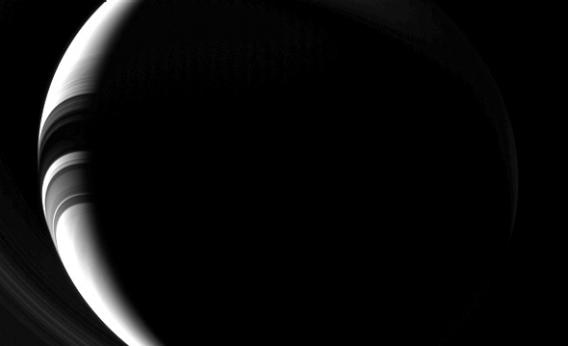Create a free profile to get unlimited access to exclusive videos, sweepstakes, and more!
Faint Rings and Crescent Planet

Sometimes, you just need a pretty picture.
In late September 2013, the Cassini spacecraft took this lovely picture of Saturn from a distance of 2.3 million kilometers (1.5 million miles). It wasn’t quite directly behind Saturn as seen from the Sun, so the planet itself is a crescent, seen at a steep angle.
The rings are barely visible; Cassini was “underneath” them, looking toward their unlit side. Different rings react differently to sunlight. The broad and dense B ring, for example, doesn’t let much light through, so it appears dark. The C ring has finer particles, so it tends to let more light through, even scattering sunlight forward in the same direction it comes. So from behind, the C ring appears brighter.
You can easily see the shadow of the rings on the planet. But look on the dark side of Saturn, at the upper right. See that faint glowing band? That’s ringlight! Sunlight hits the rings, which reflect the light back toward the Sun and Saturn. Since it’s springtime in the northern hemisphere of Saturn, the Sun is shining down on the rings, which reflect the light up toward Saturn’s northern latitudes, illuminating the cloud tops. How about that?
That’s the thing about a pretty picture; there’s a reason it’s pretty. And the prettiness is always better when you know why.


























